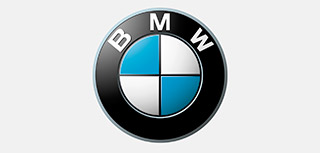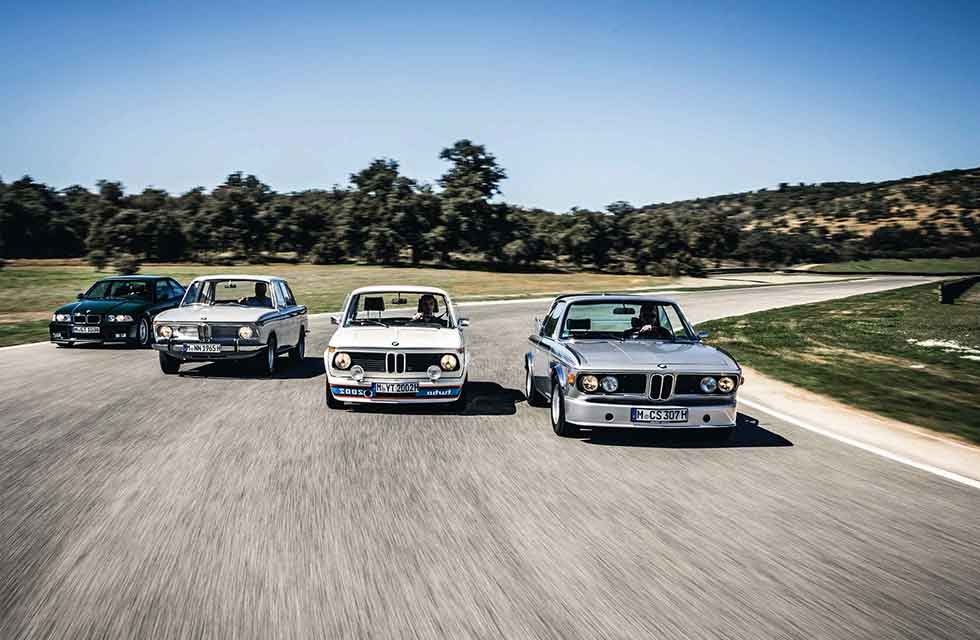
Ultimate driving machines. BMW racing saloons. Four generations prove the might of BMW in saloon car racing, and the changing technology that kept it at the forefront for four decades and more. Glen Waddington takes to the track. Photography Gudrun Muschalla/BMW.
BMW’s racing saloons – Five decades of brilliance at Spain’s Ascari Circuit
‘It feels as taut, squat and eager as it looks. Few 1970s saloons are more characterful’
We have 3.371 miles of perfect tarmac at our disposal here at Ascari, one of the most technically challenging race circuits on the planet. But it isn’t the challenge that’s uppermost in my mind just now. Neither is it the sheer beauty of the place: Ascari undulates provocatively amid the mountains of southern Spain, close to Ronda. It isn’t the bright blue sky, not even the promise of 25ºC temperatures by lunchtime, impressive though they are to a sun-starved Brit as winter gives way to spring. No, it’s the noise.
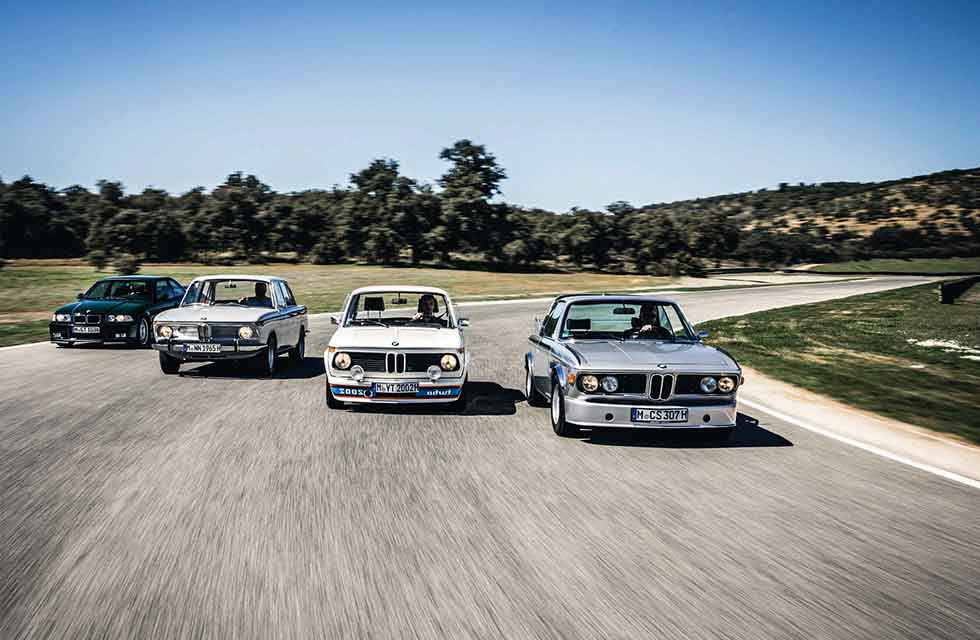
Screaming its way round the track is a BMW M1 Procar E26. It’s being driven by BMW stalwart, Touring Car legend, former Williams F1 test driver and F3 and endurance racer Jörg Müller. Actually, ‘driven’ doesn’t do it: any such word needs to combine forcefulness, precision, bravura and balls in a verb that describes the effortless execution of high-speed directional progress. Looks effortless from here, anyway. And the noise is entirely justified: it’s being recorded for a new computer game. Wonder if he’ll give me a lift in it later?
Enough of that for now. I tear my eyes back to the pitlane and gaze with wonder and joy over the four cars that accompanied the BMW M1 E26 in a truck on its journey here from Munich: they all belong to BMW Group Classic. Here we have four very different expressions of BMW’s evolutionary prowess in saloon car racing: a 1960s 1800 TI/SA Type 118, 1970s 3.0 CSL ‘Batmobile’ E9 / 3.2CSL E9 and 2002 Turbo E20, then skipping a decade to the E36/2S M3 GT of the 1990s. And each, in its own way, looks absolutely mouth-watering.
First things First: we’ll start with the oldest. From afar the 1965 Ti/SA Type 118 might be something your headmaster drove, but then you spot the cues: wide steel wheels, a (relatively) wide-bore exhaust in place of the usual peashooter, and, inside, fabulous red vinyl rest-all- Masterfit bucket seats and a revcounter mounted atop the steering column, itself culminating in a three-spoke wood-rim wheel. While the shark-like CSL wins the presence stakes here, this fourdoor’s stance speaks quietly yet has you rapt.
It’s a proper homologation special, BMW’s first before it got into such things with regularity, and the spec is classic: ‘SA’ stands for Sonder Ausführung, a ‘special edition’ based on the standard 1800ti that had grown from 1961’s 1500 Neue Klasse Saloon Type 115. The 1773cc overhead-cam four features a counter-weighted crankshaft, larger valves, raised compression, a hot camshaft and two twin-choke Weber carburettors for a 20bhp boost to 130bhp. it’s lowered, on bigger hubs and bearings, with stiffer anti-roll bars, quicker steering and disc brakes, while power is fed to the rear wheels via a dogleg five-speed ’box. Exactly 200 were built.
‘THE BMW E20 2002 TURBO FEELS AS TAUT, SQUAT AND EAGER AS IT LOOKS, BUT I’M HAVING TO RE-LEARN MY APPROACH TO THE TRACK’
You sit upright and high, with a view across that broad bonnet and the sense that you’re teetering as you leave the pits and drop into The screw. Then hard on the throttle before a dab on the brakes into Senna S. Coaxing the ‘Tisa’ along comes naturally; it’s no powerhouse yet extremely biddable, the controls beautifully weighted, the chassis feeling balanced and secure, easy to tip into a degree or two of help from the rear axle yet not the tail-happy fright you might imagine of a 1960s saloon on semi-trailing arms.
The steering is quick and has great on-centre feel, winding on lock without a disproportionate increase in weight, and, while there’s a fair bit of travel in the brake pedal, it sheds speed without drama. That prominent revcounter is happy to read well beyond 5000rpm, and there’s no fuss from under the bonnet, just a smooth blare that increases in volume as you ride the torque out in each gear. Down into second through gachot, then up through third and fourth (demonstrating an easy shift through a well-defined gate) and flat through Brundle, before slowing hard and gathering wits for the uphill Pif-Paf chicane.
Only 130bhp but this four-door family car (loads of back seat space and a big boot too) weighs little more than a tonne: it’s fun rather than frantic, a great introduction to a circuit that, frankly, is going to take a fair bit of learning.
Back in the pitlane we move on by eight years or so to a car that began as a more compact two-door offshoot of the Neue Klasse in 1966. It feels both familiar and less so: I ran a E20 BMW 2002 as my daily driver in the early noughties, with a 100bhp single-carb 1990cc engine and none of the wheelarch extensions and bold striping of this ’02 Turbo E20. Inside, there’s a red face to the instrument binnacle and an additional pod with a boost gauge, plus a three-spoke leather-rimmed wheel and bolstered narrow-backed seats. More subtle than outside; even the four-speed shifter is the same as I remember of mine, though a quirk of right-hand-drive ’02s is the pendant pedals, which operate a box in the passenger-side footwell. here, the pedals are floor-hinged and act directly.
It starts with a gruff rumble but such similarities fade as speed is gathered exponentially, the rate of change increasing as boost builds in the Kuhnle, Kopp and Kausch turbocharger. This engine is newly rebuilt and just run-in, complete with a new turbo as BMW Group classic has recently had a batch remanufactured, so owners of the rest of the 1672 ’02 Turbos built over a brief ten-month period in 1973 can now replace theirs.
The Turbo feels at home here, as you might expect. Yet, unlike the Tisa, it wasn’t born to race in this form, though it grew out of a 270bhp turbocharged 2002tii that blew itself to smithereens on its first track outing. Instead, it became Germany’s first turbocharged production car, an experiment to see what might be achieved with the aid of forced induction – and how far the modest yet thoroughly engineered Neue Klasse could be stretched without catastrophe. To 170bhp is the answer here, 40bhp more than the fuel-injected BMW 2002tii E10 could muster.
It feels as taut, squat and eager as it looks, better tied down than the Tisa, but I’m having to re-learn my approach to the track. It’s not so much that there’s vicious turbo-lag followed by a wallop; more that the thrust increases gradually until it feels forceful. But while something cammy and highly tuned would build in proportion to right ankle flex and tacho reading, the ’02 feels more elastic than that, so you have to anticipate its delivery into the corners and modulate it carefully so you don’t upset that semi-trailing-arm tail.
The boiling-kettle soundtrack helps, the notchy little gearshift is friendly too, and the steering feels firm and faithful, with no slop. No racer, though it certainly could be. And few 1970s saloons are more characterful.
We break off from the hot laps to concentrate on some photography, whereupon I find myself mere inches from the car alongside me, driven by Jörg Müller (equally precise in low-speed manoeuvres, thankfully). We’ve swapped, so he’s in the turbo, I’m in the E9 3.0 CSL ‘Batmobile’, and a snatched conversation through windows wound down in the burgeoning heat reveals that the Tisa is his favourite car here.
‘I love its balance, the way it tells you everything through the way it moves,’ he says. There’s an adage that you don’t need the most power to win. Here’s a case in point, though it was a hero in its day, winning the 1964 German national championship (driven by Hubert Hahne) as well as several international races, with multiple class victories and three outright wins. and after dicing for 18 hours at Spa against a factory Mercedes, Rauno Aaltonen and Hahne eventually finished second in the 1964 24 hours.
But perhaps the CSi is more heroic. I last drove one nearly 20 years ago, all the way to the Nürburgring Nordschleife, where a full day was spent before driving home that night: 800 road miles in 36 hours, plus a fair few laps of The Green Hell in-between. Though Hell it wasn’t. The car felt every ounce as effective as a roadgoing GT as it did pounding the world’s most notorious track.
It was born to race against the Ford Capri RS2600 that had dominated European Touring Cars, and what better way to fight back than by hiring Ford engineers Jochen Neerpasch and Martin Braungart? The move led directly to the formation of BMW’s M division, but first came Toine Hezemans’ victory in the 1973 European Touring Car Championship and a class victory at Le Mans with Dieter Quester that same year. The CSL then won every European Touring Car Championship from 1975 to 1979.
A total of 1265 were built, the ‘L’ standing for leicht to reflect the thinner steel used in the body, alloy doorskins, bonnet and bootlid, Perspex side windows and deleted soundproofing and trim – it’s BMW’s equivalent of Porsche’s ’1973 RS 2.7. A tiny increase in bore stretched the E9 3.0 CSi’s 2986cc straight-six to 3003cc, homologating it for the ‘over 3.0-litre’ category in August 1972, and by the following July the ultimate 206bhp 3153cc version had arrived, leaving the factory with an aerodynamic package of front air dam, wing-top strakes, a spoiler above the rear window and a tall rear wing – all of which kit was illegal for the road in Germany. So it left the factory in the boot…
Like pretty much all of them, this 3153cc car is fully thus equipped, and that straight-six sounds just gorgeous. There’s a hollowness to the induction note at idle, but blip the throttle and it snaps and barks, the exhaust ricocheting off the pit-garage wall and becoming a tuneful blare as you blast along the pitlane and on to the track, accelerating through third before a dab of the brakes to set-up the car for The Screw.
Underpinnings date back to the Neue Klasse, so this CSL is more closely related to the Tisa and the Turbo than you might expect, though the front structure was extended to make room for BMW’s then-new straight-six in 1968. There’s way more power than in the Tisa, much more linearity in its delivery than in the Turbo, and only 1270kg to hold it back. So the CSL accelerates with great strength and corners with great poise, yet there’s languid maturity in how it deports itself.
That suits the way in which you haul with evenly metered torque and power against four fairly short gears, so that engine is always spinning hard, keen to bite harder with every millimetre of throttle travel. Similarly, the steering is superb, full of feel yet never too heavy, every input made even more enjoyable because you apply it via what must be one of the most attractive-looking steering wheels of any car ever. The Scheel racing seats feel as good as they look, too.
I have a couple of favourite corners now, braking hard ahead of Oulton (a sharp righthander) and getting on the power so that the tail helps out, more than just a little adjustment, approaching a slide, yet so easy to modulate and giving you a shiver of satisfaction as it comes back into line ready for the climb and drop through Bathurst, digging in against the banking on the way out. Then there are the twin apexes of Mike Greenhalgh, being careful not to turn-in too early; back on the power before braking hard for Gachot, and slingshot out in second for the (almost; I’m not quite brave enough in this car) flat section ahead of Pif-Paf. Massively satisfying, this really is a hero of a car. I’m smitten. Again.
At the beginning of the day I’d taken a few sighting laps with Klaus Panchyrz. These days he’s a pro driver and instructor, often hired by manufacturers for launches and equally often to be found at the Nordschleife, teaching people the fastest way round. His background includes a stint in Formula 3 as a VW works driver; indeed, Müller and he last met on the podium at Monaco in 1991, when they finished first and second respectively in Formula 3! He’s been a class winner in the Nürburgring 24 Hours, exactly the kind of race the BMW E36/2S M3 GT was developed for. And we happen to have one right here…
We all know the tale of the M3, launched in E30 3-Series form in 1986 with tacked-on glassfibre rear bodywork for better aerodynamics and a 16-valve 2.3-litre four that employed a cut-down version of the E26 BMW M1’s cylinder head on a block that dates back to the Neue Klasse’s. No worries there: that same block had withstood more than 1100bhp in 1.5-litre turbo form for Formula 1, during a period when BMW had left saloon racing to the likes of Alpina and AC Schnitzer, turned to Group 2, Group 5 and F1, and learned how to keep turbo engines in one piece.
Then it returned with a bang. In an E30 M3, Roberto Ravaglio won the 1987 European Touring Car Championship, while Ford took the manufacturers’ title with the Sierra RS500 Cosworth. But perhaps BMW is known better for its sixes than its fours; indeed, legendary BMW engineer Alex von Falkenhausen considered his work on the CSL and M1 engines to be far more significant. With homologation quantities by then set at 5000, these were no longer limited-production cars and, as E30 gave way to E36, so the M3 version became a range-topper rather than a racing special. And it scored a 24-valve twin-cam straight-six into the bargain.
In 1994, two years after the E36/2S M3 had arrived, along came the M3 GT: still a 2990cc straight-six, but with power up from 286 to 295bhp. Only 356 cars were built, and this one – with just over 10,000km on the clock – has never left BMW.
As you might expect, given the gap, it feels so much more modern than the other cars here. The engine sears its way around the revcounter, snarling and sizzling as it does so, but it’s mechanically quiet, there’s little in the way of wind noise, the ride is pliant, there are air vents at face level, ergonomics that present all the controls to you rather than have you hunting for them. And, put simply, it is by far the easiest car here in which to go quickly round Ascari. I get nowhere near to being flat after Gachot and through Brundle, but there’s no doubt that I’m carrying the most speed through and out of Pif-Paf. There’s plentiful grip, easy adjustability, high-geared power steering, instant braking. Great fun, no doubt about it, but it’s far less an occasion than driving any of the older cars.
I can totally understand why Jörg Müller loves the Tisa so much, but if I was asked to leave with any car here, I’d take the E9 CSL and drive it all the way home. It’s only 1500 miles or so. A couple of days in this European Touring Car champ, and I’m sure I’d still be up for more once I got back. Before that, though, how about a quick ride in the M1 E26?
1965 BMW 1800 TI/SA Type 118
Engine 1773cc four-cylinder, OHC, twin Weber 45 DCOE carburettors
Max Power 130bhp @ 6100rpm
Max Torque 115lb ft @ 5100rpm
Transmission Five-speed manual, rear-wheel drive
Steering Recirculating ball
Suspension Front: MacPherson struts, coil springs, anti-roll bar. Rear: semi-trailing arms, coil springs, telescopic dampers, anti-roll bar
Brakes Discs
Weight 1050kg
Top speed 116mph
Above and far right The 1800 TI/SA has less than half the power of the M3 it’s chasing, yet it’s so much fun; single-cam twin-carb four proves surprisingly vigorous; period-looking interior charms.
1973 BMW 2002 Turbo E20
Engine 1990cc four-cylinder, OHC, Kugelfischer fuel injection, KKK turbocharger
Max Power 170bhp @ 5800rpm
Max Torque 177bhp @ 4000rpm
Transmission Four-speed manual, rear-wheel drive
Steering Recirculating ball
Suspension Front: MacPherson struts, coil springs, anti-roll bar. Rear: semi-trailing arms, coil springs, telescopic dampers, anti-roll bar
Brakes Discs front, drums rear
Weight 1080kg
Top speed 130mph
0-60mph 7.3sec
Left, right and below right ’02 became the archetype for every BMW saloon that followed; turbocharged four-cylinder is prescient of today’s 3-series; fun handling, huge character.
1973 BMW 3.0 CSL E9
Engine 3153cc straight-six, OHC, Bosch fuel injection
Max Power 206bhp @ 5600rpm
Max Torque 211lb ft @ 4200rpm
Transmission Four-speed manual, rear-wheel drive
Steering Recirculating ball, power-assisted
Suspension Front: MacPherson struts, coil springs, anti-roll bar. Rear: semi-trailing arms, coil springs, telescopic dampers, anti-roll bar
Brakes Discs, vented at front
Weight 1270kg
Top speed 133mph
0-60mph 7.3sec
Left, right and below Outrageous aero addenda give the shark-like CSL incredible presence; it really is glorious to drive, with handling, power and soundtrack to match the looks.
1995 BMW M3 GT E36/2S
Engine 2990cc straight-six, DOHC, 24-valve, variable timing, electronic fuel injection and management
Max Power 295bhp @ 7000rpm
Max Torque 238lb ft @ 3900rpm
Transmission Five-speed manual, rear-wheel drive
Steering Rack and pinion, power-assisted
Suspension Front: MacPherson struts, coil springs, anti-roll bar. Rear: multi-link, coil springs, telescopic dampers, anti-roll bar
Brakes Vented discs
Weight 1460kg
Top speed 171mph
0-60mph 5.6sec
Below and right By far the most modern car here, yet the M3 has more character in common with the CSL than any current BMW. Easy to drive fast.
BMW M1 Procar E26
So, about that lift, then… M1 Procar, Jörg Müller: Glen Waddington returns in one piece.
The BMW M1 E26 was ill-fated, we know that. Before all 400 built could be sold, BMW had to discount them: buyers wanted more cylinders and a supercar badge. It missed the slot for Group 4 racing, so BMW launched its own F1 support series, called Procar. It’s a heroic misstep, with glorious Giugiaro styling, an iconic twin-cam straight-six – and the first of those M badges.
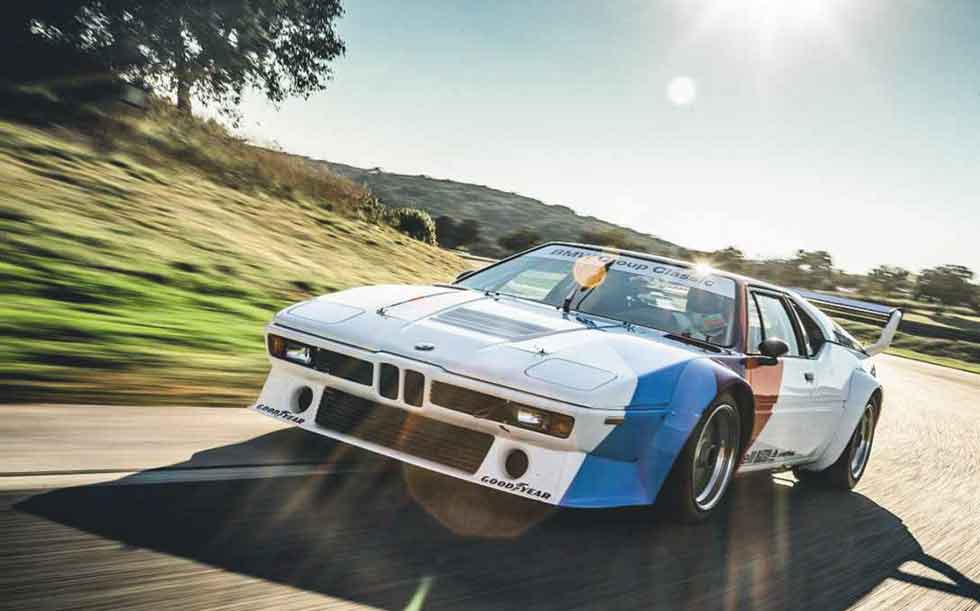
‘You’d never believe it’s 40 years old,’ says Müller, and I agree: it’s a wake-up call. Especially just ahead of joining him in there, on old-fashioned rubber, 470bhp (at 9000rpm!) shoving along a kerb-weight of well under a tonne. But he’s tested F1 cars: 750bhp, 500kg. ‘Do the maths! But, you know, in many ways this car is still state-of-the-art: mid-engined, a spaceframe chassis, four valves per cylinder. It’s very pure.’
This one was built by BMW technicians using left-over components after the series finished; it has never left the company, and has just been restored. I’m clamped in, then the sound recording gear is handed to me. Yes, this car’s soundtrack is about to star on consoles in DiRT Rally 2.0. And we’re off.
‘We’ll take it easy for the first half-lap,’ shouts Müller earnestly as we rip along the pitlane. Doesn’t feel it from my side, though, as he commits to a line through The screw that I’m damn certain ought to have us tearing up the infield. I’m pinned in my seat, clinging on to that (expensive-looking) tangle of wires and boxes on my lap, in awe at the fierceness of Müller’s inputs, be they to throttle, brakes or clutch and gearlever. Yet the effect is seamless: the car flows, the engine resounds as a multi-layered choir from baritone to soprano, and a shove in the back proves any potential E26 M1 buyer was wrong to doubt the capability of six cylinders in a V12 market.
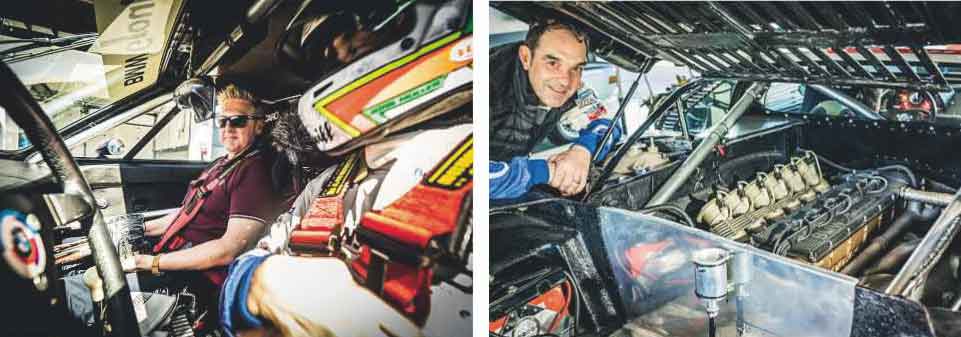
After Bathurst the hammer goes down harder. Müller chortles as the M1 E26 squirms under braking – ‘Those old-style tyres, hahaha!’ – and then we are flat through Brundle, me still clinging on though there’s nowhere to brace my feet so I’ve slid forward under braking and can only hope that this harness stays fast. Hard – so hard – on the brakes into Sebring, smash, bang, flip-flop through Pif-Paf… then I’m pretty much lost until I see the pitlane exit sign, wearily raise a thumb, and we’re in for another lap. don’t think I’ve ever been driven harder in anything else, anywhere. Pro in a Procar. Enough said.
{module BMW M1}

